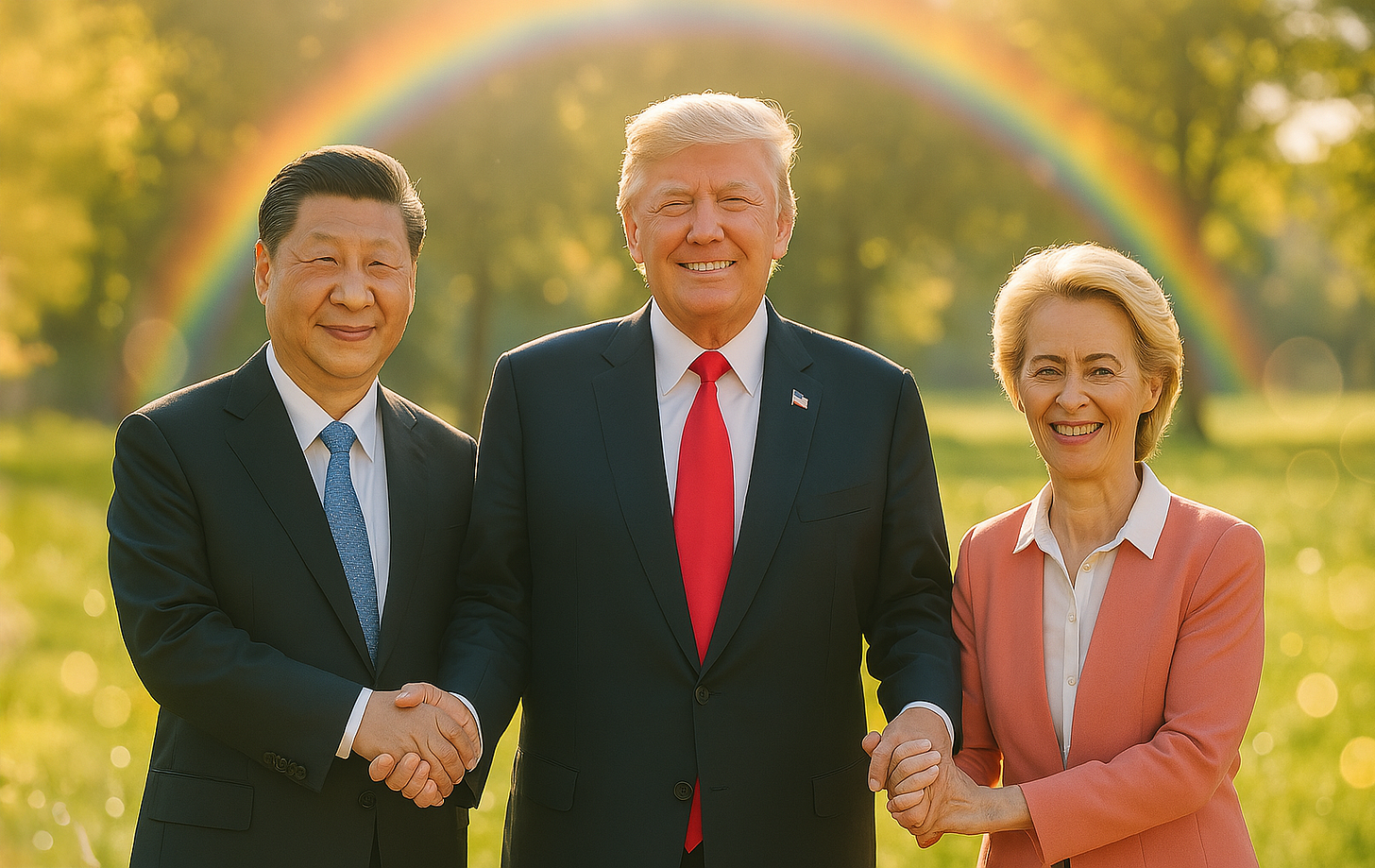The NonZero Tariff Solution
There’s a way to protect US workers without endangering the world trade system
Save the date: I’ll be doing a livestream tomorrow--Friday, April 4--starting at 1 pm US Eastern Time, with former NZN staffer Nikita Petrov and friend-of-NZN Boris Shoshitaishvili. See last week’s Earthling for elaboration on our plan for the conversation, but the TLDR is that we’ll talk about the weird state of the world (probably in some weird ways), and we’ll take questions during the second half of the two-hour chat. In addition to saving the date you can save this link to the chat. —Bob
As a torrent of tariffs descends on the world, and Democrats (along with some Republicans) denounce Donald Trump’s recklessness, Trump could reasonably ask (if he were inclined to ask reasonable questions): Well what would you do if you were in my shoes? What’s your plan for buffering American workers against brutal competition with low-wage workers in other countries?
That question has a surprisingly good answer. There is a rarely discussed—in fact, almost never discussed—approach to managing trade that softens the impact of globalization on US workers but avoids some of the downsides of steep unilateral tariffs. It doesn’t risk a trade war, and it doesn’t threaten to unravel the web of global economic interdependence that makes real wars less likely.
Readers familiar with the NonZero world view may be able to guess one feature of this approach: It involves international governance. But here’s something you won’t guess: America’s leading innovator in this particular form of international governance is an avowed nationalist—Donald Trump.
During Trump’s first term, his administration renegotiated the North America Free Trade Agreement (and re-branded it, turning its acronym into USMCA). USMCA included one new feature that had a distinctly leftish bent. In a less polarized political environment, progressives might have celebrated this feature and insisted that we not only build on it within the North American trade bloc but implement its logic at the World Trade Organization as well. Then the WTO could become a forum where, in the words of one noted critic of capitalism, “workers of the world unite.”
I lauded this provision of the USMCA in a long piece I wrote for Wired in 2019. But don’t click on that link!—the Wired piece is paywalled. Plus, it’s very long. But here is the key part:
When NAFTA was being negotiated in the 1990s, American labor unions, worried about losing jobs to Mexico, lobbied for provisions that would raise Mexican wages—whether by strengthening labor unions in Mexico or by raising wages there more directly. And NAFTA did include provisions that in theory could do that, but they were oblique and ineffectual, partly because businesspeople on both sides of the border opposed stronger ones.
Trump’s trade negotiators pushed for and got something stronger: a requirement that 40 percent of the content of cars that trade freely within North America be made by workers earning at least $16 an hour. The idea is that Mexican factories can either raise wages or watch jobs migrate north. And though Mexican governments, in deference to the wishes of Mexico’s business class, have traditionally opposed such provisions, the new left-wing Mexican government likes them. (As for the irony that a Mexican president supported by workers would favor a policy designed to price some of them out of the market: Sacrificing a few jobs for higher wages is a common position of pro-labor politicians, as when Democrats in the US back a minimum wage hike that may dampen hiring.)
This one provision may seem like a small thing, and it is. But it represents something big: Bodies of global governance, like bodies of national governance, can in principle serve various constituencies. They can lean right or lean left. To take one possible, far-off scenario: A future version of the WTO could authorize punitive tariffs against—or even deny membership to—nations that don’t let unions organize. It could set baseline environmental or even workplace safety standards for factories in member nations, which not only would make for a cleaner environment and safer jobs but also would raise production costs in low-wage countries, making globalization less threatening to workers in affluent countries.
So what are the chances that Trump shares this vision, that he sees a provision he put in NAFTA 2.0 leading to Global Governance 2.0? Roughly zero. Trump supported the provision not to realize a grand dream but to please a pivotal part of his base—blue-collar workers whose alienation from the Democratic Party helped swing Rust Belt votes his way in 2016. And that’s the point: What makes this vision plausible is that it has strong underlying political logic.
Just to show you how deeply NonZeroish a policy this is: I had advocated the same basic idea in my book Nonzero, published in early 2000. The book was generally pro-trade, and I’m still pro-trade. But near the end of the book I warned that “the globalization of capital and technology” was creating some unhappy campers, including “Americans who lose jobs to low-wage foreigners, and French farmers exposed to high-tech competition from abroad.” One result, I wrote, was “a reactionary nationalism with a nasty, nativist undercurrent that, amid an economic downturn, could get pretty ugly.”
In explaining how international governance could dampen this nationalist backlash, I got into the ideas of the early-twentieth-century sociologist William Ogburn, who had written about the socially destabilizing effects of rapid change. Here’s an extended excerpt from the part of my book where I link Ogburn’s thinking (which also has relevance to the destabilizing effects of rapid progress in AI) to the structure of trade agreements:



